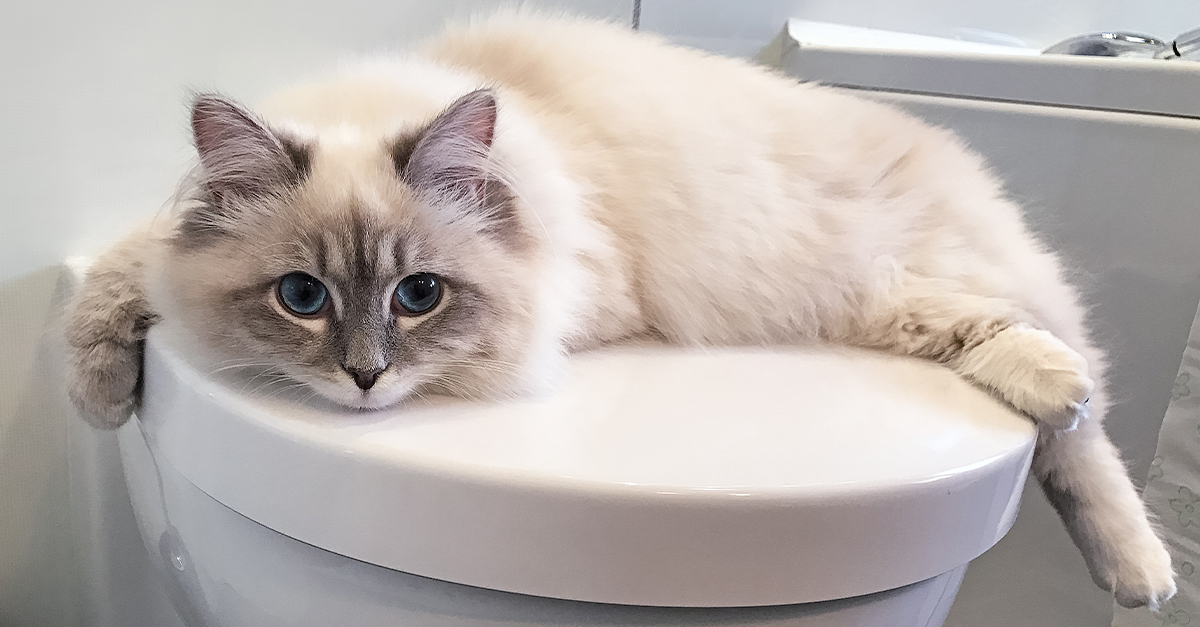Reasons You Must Never Flush Cat Poop Down Your Toilet - Critical Information
Reasons You Must Never Flush Cat Poop Down Your Toilet - Critical Information
Blog Article
We have found the article on How to Dispose of Cat Poop and Litter Without Plastic Bags listed below on the net and thought it made perfect sense to relate it with you over here.

Introduction
As feline proprietors, it's essential to be mindful of exactly how we dispose of our feline pals' waste. While it might appear hassle-free to purge cat poop down the toilet, this practice can have harmful repercussions for both the atmosphere and human health and wellness.
Ecological Impact
Purging feline poop introduces unsafe virus and parasites into the water, presenting a considerable threat to water communities. These impurities can negatively impact marine life and compromise water quality.
Health and wellness Risks
In addition to environmental problems, flushing pet cat waste can likewise posture health and wellness dangers to humans. Feline feces might consist of Toxoplasma gondii, a parasite that can create toxoplasmosis-- a potentially serious disease, specifically for expecting females and individuals with weakened body immune systems.
Alternatives to Flushing
The good news is, there are more secure and more accountable means to throw away feline poop. Think about the complying with options:
1. Scoop and Dispose in Trash
The most common technique of throwing away feline poop is to scoop it into an eco-friendly bag and throw it in the garbage. Make sure to use a specialized litter inside story and throw away the waste promptly.
2. Usage Biodegradable Litter
Select eco-friendly cat litter made from materials such as corn or wheat. These clutters are eco-friendly and can be securely dealt with in the trash.
3. Bury in the Yard
If you have a yard, think about burying cat waste in a designated location far from veggie gardens and water sources. Make certain to dig deep adequate to avoid contamination of groundwater.
4. Set Up a Pet Waste Disposal System
Invest in a pet garbage disposal system particularly developed for pet cat waste. These systems utilize enzymes to break down the waste, decreasing smell and ecological impact.
Verdict
Accountable animal possession extends past providing food and shelter-- it likewise includes correct waste monitoring. By refraining from purging cat poop down the commode and selecting alternate disposal techniques, we can decrease our ecological footprint and safeguard human wellness.
Why Can’t I Flush Cat Poop?
It Spreads a Parasite
Cats are frequently infected with a parasite called toxoplasma gondii. The parasite causes an infection called toxoplasmosis. It is usually harmless to cats. The parasite only uses cat poop as a host for its eggs. Otherwise, the cat’s immune system usually keeps the infection at low enough levels to maintain its own health. But it does not stop the develop of eggs. These eggs are tiny and surprisingly tough. They may survive for a year before they begin to grow. But that’s the problem.
Our wastewater system is not designed to deal with toxoplasmosis eggs. Instead, most eggs will flush from your toilet into sewers and wastewater management plants. After the sewage is treated for many other harmful things in it, it is typically released into local rivers, lakes, or oceans. Here, the toxoplasmosis eggs can find new hosts, including starfish, crabs, otters, and many other wildlife. For many, this is a significant risk to their health. Toxoplasmosis can also end up infecting water sources that are important for agriculture, which means our deer, pigs, and sheep can get infected too.
Is There Risk to Humans?
There can be a risk to human life from flushing cat poop down the toilet. If you do so, the parasites from your cat’s poop can end up in shellfish, game animals, or livestock. If this meat is then served raw or undercooked, the people who eat it can get sick.
In fact, according to the CDC, 40 million people in the United States are infected with toxoplasma gondii. They get it from exposure to infected seafood, or from some kind of cat poop contamination, like drinking from a stream that is contaminated or touching anything that has come into contact with cat poop. That includes just cleaning a cat litter box.
Most people who get infected with these parasites will not develop any symptoms. However, for pregnant women or for those with compromised immune systems, the parasite can cause severe health problems.
How to Handle Cat Poop
The best way to handle cat poop is actually to clean the box more often. The eggs that the parasite sheds will not become active until one to five days after the cat poops. That means that if you clean daily, you’re much less likely to come into direct contact with infectious eggs.
That said, always dispose of cat poop in the garbage and not down the toilet. Wash your hands before and after you clean the litter box, and bring the bag of poop right outside to your garbage bins.
https://trenchlesssolutionsusa.com/why-cant-i-flush-cat-poop/

I'm very eager about How to Dispose of Cat Poop and Litter Without Plastic Bags and I'm hoping you enjoyed reading the new article. Sharing is good. One never knows, you could be helping someone out. Thank you so much for your time invested reading it.
Request Service Report this page